Red light therapy is gaining popularity as an alternative treatment approach that promises various health benefits. However, does it truly deliver as advertised, or is it overhyped? Let's shine a light on the science behind this method.

What Is Red Light Therapy?
Red light therapy involves exposure to wavelengths in the red and near-infrared ranges of the light spectrum, typically between 600–1000 nanometers. These include red light at 600–700 nm and near-infrared at 800-1000nm. A portable device is used to emit these wavelengths onto the skin for 1–30 minutes per treatment, usually targeting areas like the face, muscles, or joints.
The proposed mechanism is that these specific wavelengths get absorbed by mitochondrial chromophores within cells, most notably cytochrome C oxidase. This important enzyme located in the mitochondria produces adenosine triphosphate (ATP), the primary energy source for all cellular functions. Studies show red light therapy can significantly boost ATP levels.
This spike in ATP is believed to trigger intracellular signaling cascades through activating transcription factors and altering gene expression pathways related to processes like collagen synthesis, growth factor release, and reducing inflammatory cytokines. Collectively, these effects aim to optimize cellular metabolism and functions to provide potential therapeutic benefits.
How Does Red Light Therapy Work?
When the light hits the skin, it penetrates deep into tissues where chromophores absorb the photons. Mitochondrial cytochrome c oxidase is one such chromophore tremendously critical for cellular metabolism. Its absorption of red and near-infrared light photons markedly increases the production of ATP within the mitochondria. ATP, known as the "energy currency" of cells, powers all chemical reactions, keeping our cells buzzing along.
Following this initial energy boost, a complex chain reaction kicks in. Transcription factors get activated to alter gene expression across the genome. At the molecular level, proteins tied to processes such as collagen generation, angiogenic growth factors, and anti-inflammatory cytokines start being synthesized differently. These changes help optimize how well cells can repair damage, grow, and prevent excess inflammation as tissues renew.

Red Light Therapy Lasers vs LEDs
The main light sources for red light therapy are lasers and light-emitting diode (LED) panels. Lasers emit a narrow, concentrated beam that penetrates deeper into muscles and joints - beneficial for these types of conditions. However, the intensity requires shorter sessions and specialized training for safe usage. Medical-grade laser devices cost $1,000–$5,000.
LED panels emit over a wider area in a diffuse field, making them better suited to treat larger surface areas quickly and safely at home. Sessions last 15–30 minutes to achieve equivalent results due to lower intensity. An LED panel sufficient for common self-care purposes ranges from $100-1000. Neither technology is categorically better - choosing lasers versus LEDs depends on the condition and desired penetration depth.
Benefits of Red Light Therapy
Current research shows promise for red light therapy in reducing inflammation and accelerating recovery from injuries like wounds or surgeries through several mechanisms. Its anti-inflammatory effects help decrease pain from arthritis and other musculoskeletal issues by inhibiting pro-inflammatory cytokines while stimulating anti-inflammatory responses.
Some published benefits include:
- Faster wound healingby boosting collagen production and new blood vessel growth (angiogenesis)
- Reduced muscle soreness through mitigating exercise-induced inflammation
- Circulation enhancementfrom light-initiated release of angiogenic growth factors
- Preliminary evidence hints it may relieve signs of aging skin and even promote hair regrowth
While larger and long-term studies are still ongoing, initial evidence demonstrates red light therapy's ability to induce positive cellular changes supporting various wellness applications. Continued research seeks to optimize and expand its uses.
Risks and Side Effects of Red Light Therapy
Red light therapy shows good safety when administered properly. However, risks exist that users should be cognizant of. It is particularly crucial to protect the eyes from exposure, especially when using near-infrared light or during prolonged red light therapy, as such exposure can potentially damage the retina. Manufacturers equip professional devices with specialized eyewear for blocking wavelengths.
On rare occasions, sensitive individuals may encounter temporary skin irritation, redness, or mild heating from treatment. More serious reactions like burns present a risk if dosage times are exceeded with high-powered lasers. As with any new therapy, long-term safety profiling through additional investigations would provide assurance.
Provided treatment adheres strictly to parameters as directed, most reports confirm red light therapy as generally risk-adverse for most healthy adults. However, those with medical issues or using certain medications should check with their doctor before trying. With responsible use and precautions in place, it shows a positive safety profile overall.

Science Shows That It Really Works
Peer-reviewed studies validate several practical applications where red light therapy delivers:
- Wound healing, such as diabetic foot ulcers, sees significantly accelerated closure rates and reduced inflammation versus placebo controls.
- Osteoarthritis patients report markedly less joint pain and improved mobility post-treatment in comparison to their untreated counterparts.
- Red light therapy can regulate circadian rhythms, thus enhancing sleep quality. It aids in falling asleep more quickly by reducing pre-sleep anxiety and relaxing the body.
- Red light therapy positively impacts fertility. In men, it can improve sperm vitality, while in women, it contributes to better ovarian function and uterine health.
- Red light therapy is effective in alleviating symptoms of depression and anxiety. It stimulates the brain to release neurotransmitters like serotonin and dopamine, helping to regulate mood and offering a non-pharmacological treatment option.
- Athletes treated for delayed-onset muscle soreness experienced dramatically reduced tenderness and enhanced range of motion relative to baselines.
- Multiple skin-focused trials prove its anti-aging abilities through noticeable wrinkle reductions and textual refinements self-reported by participants.
- Research synthesizes its effectiveness for acne when paired with blue light therapy too.
While continued investigations aim to broaden clinical understandings, current evidence corroborates positive functionality for select medicinal problem areas. Coupled with a safe profile, this positions red light therapy as a valid wellness consideration - so long as applications match conditions and oversight occurs when necessary. Overall, the science says it delivers on certain promises.
Conclusion
In closing, objective reviews of the literature suggest red light therapy merits its increasing popularity for particular therapeutic applications. Proper guidance applies it safely across both clinical and casual settings to reap real, evidenced rewards for wound, pain and age management. Continued research will likely profile its performances further while upholding safety standards. For now, it offers a viable solution worthy of exploration.











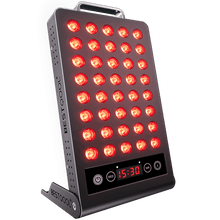
 Small
Small
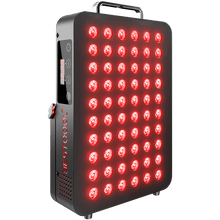
 Moderate
Moderate
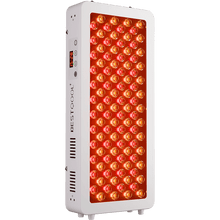
 Moderate
Moderate
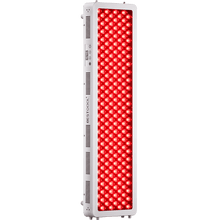
 Moderate
Moderate
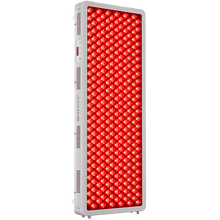
 Full
Full



